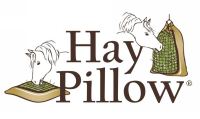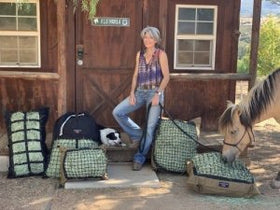Slow Feeding
Hay & Diet
Gut Health (Colic & Ulcers)
Minis & Farm Animals
Health & Safety
Behavior
Musings
Giveaways
Hay & Diet
Gut Health (Colic & Ulcers)
Minis & Farm Animals
Health & Safety
Behavior
Musings
Giveaways
Slow Feeding
- Slow Feeding Fails: Avoid These Common Misconceptions
- Safety Tips for Choosing & Using Slow Feeders for Horses
- Slow Feeding - Tips & Techniques
- 9 Benefits of Slow Feeding Horses - Get Slow Feed Savvy
- 7 Slow Feed Do’s and Don’ts for Horses
- Slow Feed Solutions by Enclosure Type & Weather Condition
- Choosing a Mesh Size for Slow Feeding
- How I Chose the Best Slow Feeder for My Horse
- Are You a Prisoner of Feeding? Here's How I Broke Free
- Slow Feed Tip - Feed Grass Hay & Alfalfa Separately
- Weigh Hay Rations? No Way! What You Need to Know
- Slow Feed Q&A: What's the Best Approach for Fast Eaters?
Hay & Diet
- I Had to Feed Straw During a Hay Shortage & My Horses Benefited
- Beyond Low Sugar/Starch - Choosing Hay for Weight Management
- Is Your Grass Hay Really Low Sugar/Starch?
- Frequently Overlooked Causes of Hay Belly in Horses & Solutions
- Healthy Gradual Weight Loss for Horses vs. Fasting & Forage Restriction
- Can Horses Eat More Hay Without Weight Gain? The Surprising Factors
- How & Where to Test Your Horse's Hay & Interpret Results
- Sugar Content of Pasture & Hay: Q & A with Katy Watts, Founder of Safergrass.org
- Grass Hay vs Pellets, Cubes & Chopped Hay – Pros & Cons
- A Safer Always Have Hay Source – Mature Grass Hay
- Keeping Horses Warm Naturally – Internally and Externally
- Hay Preservatives: 5 Ingredients You Need to Know About
- Nitrates in Hay Exposed - What You Need to Know
- How to Introduce & Incorporate Free-Choice Forage: An Action Plan
Gut Health - (Colic & Ulcers)
- Equine Gut Health - The Need for Feed
- Sand Colic - The Surprising (Simple) Cure & Prevention
- 7 Easy Ways to Help Prevent Equine Colic
- Equine Gastric Acid - 12 Facts You May Not Know
- Preventing Equine Gastric Ulcers - How Forage Buffers Acid
- Causes of Equine Ulcers – 7 Stress Factors & Solutions
- Why You Shouldn't Transport Horses on An Empty Stomach
- Never Exercise Your Horse on An Empty Stomach .... Ever!
Minis & Farm Animals
- Feeding Miniature Horses & Donkeys: Why Slow Fed Forage Is Best
- Slow Feed Solutions for Farm Animals - Goats, Sheep, Alpacas & More
- Feeding Donkeys Straw and Hay: Q & A with The Donkey Sanctuary
^ TOP
Health & Safety
- How to Make Quality Equine Joint Supplements for a Fraction of the Cost
- Study - How Hay Feeder Height Affects Jaw, Neck & Back Posture in Horses
- Why Does My Horse Drink So Much Water?
- Horse Emergency Identification Tags - ID Your Horse Easily
- Why Horses Need Salt & Why Salt Blocks Are Not Enough
- 6 Great Reasons to Feed from Ground Level
- Considerations if Giving Vaccines, Sedatives or Dewormers Concurrently
- Can Equine Fecal Egg Counts Reveal Accurate Parasite Burdens?
- Fly Spray: 3 Ingredients You Need to Know About
- Horse Tail Wraps, Braids & Bags – Potential Risks
Behavior
- Horse Boredom Busters - Toys & Enrichment Tips for Stall or Pasture
- Why Do Horses Paw?
- Why Most Horses Prefer to Eat Outside if Given the Choice
- Why Do Horses Chew on Things?
- Have a "Hangry" Horse at Feeding Time?
Musings
Giveaways
Check our blog for active giveaways! Sign up for our newsletter to be the first to hear about giveaways & sales.


